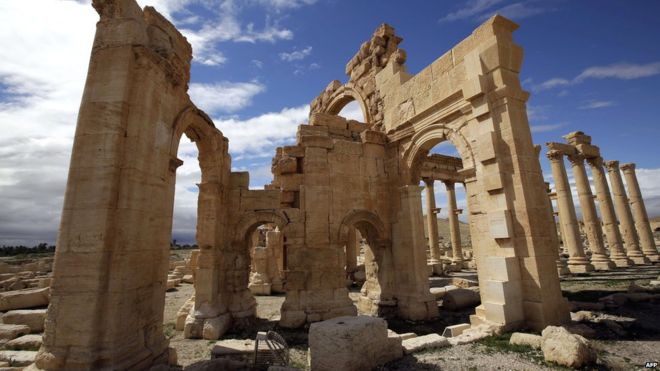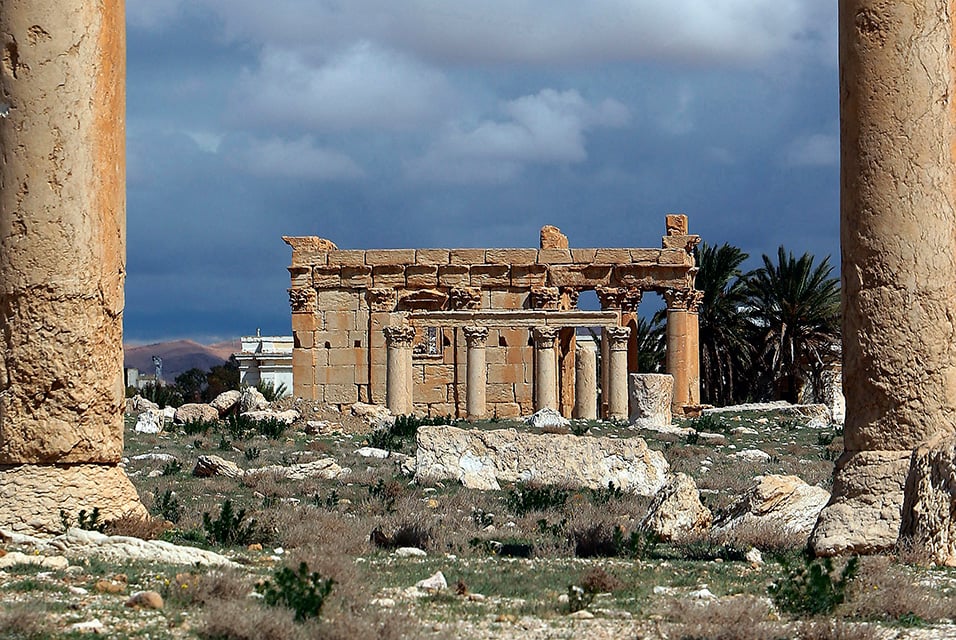Law & Politics
ISIS Blows Up Palmyra’s Ancient Baal Shamin Temple, Fulfilling Dark Predictions
It's the latest cultural site to fall victim to the Islamic militant group.

It's the latest cultural site to fall victim to the Islamic militant group.

Sarah Cascone

The Islamic State of Iraq and Syria (ISIS) has committed yet another atrocity, blowing up the ancient temple of Baal Shamin in the ancient Syrian city of Palmyra, adding to the long list of cultural relics that the jihadist group has destroyed.
News of the temple’s destruction falls on the heels of last week’s beheading of an 82-year old scholar of Syrian antiquities in Palmyra’s main square.
In May, experts were already warning that the ancient ruins at Palmyra, a World Heritage Site, were under severe threat from approaching ISIS forces.
In response to such fears, Abu Laith al-Saudi, an ISIS commander, reportedly told a Syrian radio program that Palmyra’s ancient structures would remain unharmed, and that “we will preserve it and it will not be damaged. But what we will do is to pulverize statues that the miscreants used to pray for.”
Unfortunately, ISIS has gone back on that promise.
ISIS considers statues and grave markers to be idolatrous, and the group reportedly even hopes to destroy the Kaaba at Mecca. News of the temple’s destruction is the first indication that ISIS is also set on razing the ancient city’s historic monuments.
The UN has publicly condemned ISIS’s destruction of Iraqi cultural heritage, and banned the export of antiquities from the region. Major US museums and US Secretary of State John Kerry have also been quick to speak out against actions such as the brutal attack on sculptures at the Nineveh Museum in Mosul, Iraq.
Nonetheless, the militant group remains undeterred, and artifacts from many looted Middle Eastern cultural sites are being smuggled into western countries, where their illicit sale is funding ISIS operations.
Palmyra, nicknamed the “Pearl of the desert” and described by UNESCO as “one of the most important cultural centers of the ancient world,” is famous for its well-preserved Greco-Roman ruins. The Baal Shamin temple, which dates to 17 AD, was converted from a pagan place of worship to a Christian church in the fifth or sixth century.

The Baal Shamin temple in Palmyra.
Photo: Jospeh Eid, courtesy AFP.
Syrian antiquities chief Maamoun Abdulkarim told AFP that ISIS “placed a large quantity of explosives in the temple of Baal Shamin today and then blew it up causing much damage to the temple.”
Reports vary as to when the temple was actually destroyed, with the Syrian Observatory for Human Rights claiming that explosives were laid at the site in June.
At that time, ISIS destroyed the Lion Statue of Athena, a famous, ten-foot-tall limestone sculpture displayed outside the city museum, as well as several funerary bust. The museum was then converted into a prison and courtroom. Luckily, most of its holdings were removed to safety before ISIS took control of the city.
“Our darkest predictions are unfortunately taking place,” added Abdulkarim.
UPDATE:
UNESCO director-general Irina Bokova has issued a statement decrying the temple’s destruction as a war crime and encouraging the international community to take a stand against ISIS.
“The systematic destruction of cultural symbols embodying Syrian cultural diversity reveals the true intent of such attacks, which is to deprive the Syrian people of its knowledge, its identity and history. One week after the killing of Professor Khaled al-Assaad, the archaeologist who had looked after Palmyra’s ruins for four decades, this destruction is a new war crime and an immense loss for the Syrian people and for humanity,” said Bokova. “UNESCO stands by all Syrian people in their efforts to safeguard their heritage, a heritage for all humanity.”
Related Stories:
Artist Paul Coombs Speaks Out About His “ISIS Dildo Flag”
ISIS Beheadings Enter The “Crime Through Time” Museum Amid Controversy
Nine Arrests as ISIS Claims Credit for Bardo Museum Attack in Tunisia